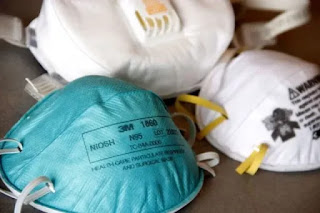The Asbestos Personal Injury Settlement Trust was created when Armstrong World Industries emerged from a bankruptcy reorganization in 2006. It takes care of asbestos related lawsuits and claims against Lancaster-based Armstrong, which had asbestos in insulation it stopped selling in 1969. Asbestos is now banned due to its association with asbestosis and mesothelioma.
Armstrong World Industries, Inc. is a Pennsylvania corporation incorporated in 1891. Created in Pittsburgh in 1860, the company originally made wine bottle corks. By the 1890s, Armstrong World Industries was the world’s largest cork company and leveraged its size and success to expand its product line. Armstrong soon made insulating corkboard, fiberboard and other similar products. It also began a linoleum flooring business, which led to the production of vinyl and other flooring materials. Although this 20th century growth was profitable for Armstrong, use of asbestos in its products eventually led to its bankruptcy filing in 2000. They filed for bankruptcy in December 6, 2000, and reorganized on August 18, 2006. Armstrong is a designer and manufacturer of floors and ceilings. Based in Lancaster, Pennsylvania, Armstrong operates 32 plants in eight countries and has approximately 8,500 employees worldwide.
The trust has a value of over $2 million when it was established in 2006. The corporation had approximately $2.9 billion in revenue in 2011 and is the world’s largest manufacturer of hardwood flooring.
Armstrong’s asbestos-related court battles began in the 1970 landmark case of Borel v. Fibreboard Paper Products Corporation. Clarence Borel sued Armstrong and 10 other manufacturers of asbestos insulation after developing an asbestos-related disease following his many years of working with their products. This was the first case that recognized it was a manufacturer’s duty to warn of asbestos dangers and the case became the foundation for all future asbestos claims.
Over the next few decades, thousands of new asbestos claims were brought against Armstrong and the company paid millions of dollars as courts ruled they knowingly disregarded the health of its employees and consumers by using asbestos in its products.
Miller v. Armstrong World Industries, Inc., decided based on Colorado law in 1991, turned into a precedent-setting case for asbestos litigation. Raymond Miller was an insulator from 1946 to 1951 and knowingly handled asbestos products from Armstrong, but he did not know asbestos was dangerous. In his claim, he said he learned of the dangers in the 1970s while reading about asbestos. Miller developed asbestosis. Armstrong's summary judgment victory was overturned on appeal.
The case set precedent under Colorado law because it held that discovery of an initial asbestos-related disease did not trigger the running of Colorado's statute of limitations on a separate disease that manifested later. In this case, for example, the discovery of asbestosis-related pleural thickening did not trigger the two-year statute of limitations that would have prevented Miller from filing an asbestosis claim.
By 2000, the cost of asbestos litigation forced the company into bankruptcy. As part of their emergence from bankruptcy and reorganization in 2006, Armstrong established the Armstrong World Industries Asbestos Trust, which was intended to settle all current and future asbestos-related claims. In its first two years, the trust received more than 200,000 claims.
Armstrong favored asbestos because of its resistance to heat and insulating properties. For much of its history, the company included asbestos in insulation, cements, tiles, vinyl flooring and many other products. As a result, such products placed a number of construction jobs at risk for exposure.
One of Armstrong’s products was Limpet, a spray-on insulation made almost entirely of asbestos. Workers who tested Limpet during its development in the 1960s said it left too much dust in the air, prompting the company to make an alternative product. The inhalation of this dust was very hazardous and certainly placed employees at risk for developing an asbestos-related disease later in life.
Armstrong then began manufacturing Armaspray, a similar spray-on insulation made of only 9 percent asbestos. Testing of Armaspray proved that it, too, was not commercially viable. Its production was discontinued within a year. To finish ongoing projects, however, Armaspray was used by Armstrong installers for another year. Future health testing of the product concluded that dust levels were more than 10 times the limit deemed acceptable by company hygienists.



No comments:
Post a Comment